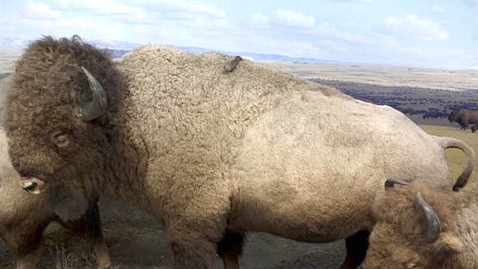American Museum of Natural History Gives Its Species Extreme Animal Makeovers

AMNH Natural Science Conservation
After decades in the public eye spent posing for millions of visitors and enduring the constant glare of the spotlight, the animals on display at the American Museum of Natural History had begun to show their age.
So the New York City museum embarked on a makeover of sorts, an extreme animal makeover, that saw the bison get a nose job, the brown bear get an eye lift, the moose, hair highlights while the gray squirrel had its grays removed.
It was all part of a $2.5 million, 13-month project to rid 75 stuffed animals in 34 of the Hall of North American Mammals’ 43 exhibits of decades of dust and wear and tear they had accumulated since the exhibits’ last renovation more than 70 years ago.
PHOTOS: Click here to see the animals before and after their makeovers.
“Everything looks brighter. Everything looks fresher,” George Dante, a trained artist turned taxidermist who has been working on the restoration for the past year, told “ Good Morning America.” “They are restored probably to how they looked back in 1942.”
Each animal, each donated to the museum after it had been shot in the wild, was vacuumed of decades’ worth of dust, delicately cleaned by hand and then evaluated for color fading, cracks and decay.
The animals were then restored by a team of experts who used photographs of living specimens and the animals’ real pelts from the museum’s storage collection to re-create their exact coloring.
Just like in the wild, each of the 75 animals had its own special needs.
The mountain goat, for one, had his eyes done.
“We actually rehydrated the skin around his eyes, removed his old eyes and put in a brand new set of eyes,” Dante told “GMA.” “He should look about 10 years younger.”
The bison needed the most extensive work, requiring a nose job, touch-up around the eyes and a full recoloring of their fur.
“The bison were the most challenging,” said Dante. “You could see the bison in the painting were a very rich, brown color. Before this they had gone to a very blond, washed-out color, but not a good blond.”
The renovation marked one of the rare times the animals, usually encased inside life-size dioramas, went without their glass protection.
The environments surrounding the animals inside those dioramas received a spruce-up as well. The skies above them were made bluer by a fresh coat of paint and the snow beneath them was made whiter by layers of quartz crystals and marble dust.
“You feel like you are really in the habitat, and they sure don’t feel dead,” museum president Ellen Futter told “GMA” of the refreshed exhibits. “It is one of the most exciting experiences that you can have.”
An anonymous donor provided the millions of dollars needed for the project, while the city of New York provided funding for the museum’s new eco-friendly lighting that will better keep the animals preserved.